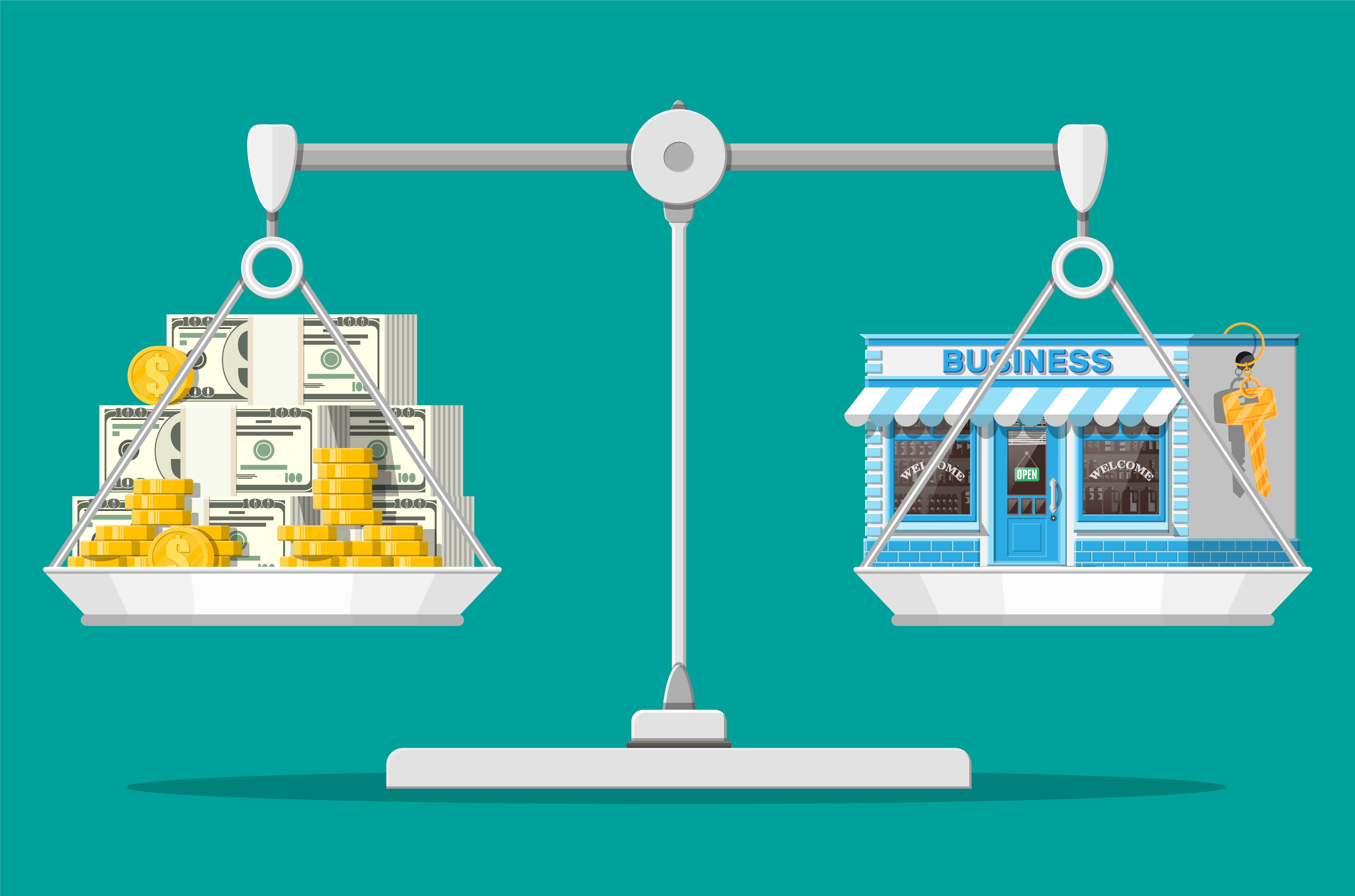Guest blog by Carey Wallace, Agency Focus
Guest blogs are written by contributors outside of HawkSoft. The author's views are entirely their own and may not reflect the views of HawkSoft.
For many agency owners, their agency is their single biggest asset and may represent a substantial portion of their life’s work and legacy. Their agency is an integral part of their life, their community, and their family. It reflects who they are, what they believe in, and their strong desire to help and serve others. Knowing that, it is shocking to me how many agency owners do not know the value of their biggest asset—their agency.
Many agents assume their agency is worth some multiple of revenue similar to other agencies they know, so they don’t think it's necessary to learn their own value. Because it's such a big part of their life, I believe fear prevents many agency owners from learning their agency’s value. By not knowing, they never understand what factors are driving the value and ultimately what they can do to maximize that value.
As you're looking to plan for your future, whether that be selling your agency or creating a perpetuation plan, knowing the value of your agency is critical. The earlier you learn that value, the more action you can take to maximize the value and create the future you want for your agency. Here are a few things you can do now to understand and increase the value of your agency.
In this article:
Start early
You should learn the value of your agency well in advance of any transition of ownership. Over 75% of the agency owners I work with express that they would like to provide the same opportunity that was given to them and explore an internal transition. It takes a minimum of 7 years to adequately plan for an internal transition, and in most cases much longer. The best thing you can do to create that opportunity is start early, learn your baseline, and use the information to maximize your agency’s value.
De-risk the four C’s
The value of your agency is not necessarily reflected on your balance sheet—in fact, many agencies have few assets that are owned by the agency. The majority of the value in any agency lies in their four C's: human capital, customer capital, structural capital, and social capital. Each area is critical to the success of your agency by helping to predict the agency’s future performance based on its strengths, weaknesses, and overall risk. Using the four C’s to identify areas of risk and take action to reduce that risk will increase the value of your agency. Let’s take a look at each type of capital and how you can reduce risk to increase value.
Human capital
The people, their talent, expertise, and relationships are incredibly valuable to your agency. They're responsible for delivering the advice and service that your customers rely upon. The depth of your staff, expertise, contracts and agreements you have in place, and level of collaboration on your team are all crucial factors in predicting the ongoing performance of your agency.
Consider this: many agency owners are the agency’s highest producer. They hold many, if not all, of the key relationships and they have built deep knowledge and expertise over the course of their career. As a result, they have earned a great deal of trust from their customers, staff, and partners. The agency owner is the riskiest person in the agency because their relationships, customers, and knowledge aren’t easily transferable. One single life event for an agency owner can have an incredibly detrimental impact on their agency.
Many agency owners are the agency's highest producer. They are the riskiest person in the agency because their relationships, customers, and knowledge aren't easily transferable. One single life event can have an incredibly detrimental impact on their agency.
If you have a staff that operates independently, with little crossover of knowledge, client relationships, and expertise, your agency has a greater risk should any member of that team leave. In an agency where there is a team approach, high collaboration, clear visibility, and shared relationships, the risk of losing one person (while not ideal) will have less of an impact on the future performance of the agency. By identifying where your agency has an elevated level of concentration in human capital, you can focus on reducing those areas of risk by cross-training, collaborating, and providing opportunities for deeper exposure across your entire team.
Customer capital

The value of your agency is largely based on the revenue that is expected to continue, as well as the ongoing profitability of the agency. The customer makeup, relationships, and types are integral to the expected ongoing revenue of the agency. It's important to look at the concentration that exists in any one customer, small group of customers, niche, or industry in order to accurately assess the risk in this area. When that concentration exists, it's important to diversify your client base as much as possible.
There are some key metrics that can help identify areas of concern with customer capital. Having a firm handle on your retention rate and lost business—including any trends that exist in that lost business—is incredibly valuable. In addition, knowing the agency’s total number of customers, average size customer, number of policies per customer, and number of years with the agency can help you evaluate the “stickiness” that exists with the agency’s customers. You may be able to track these metrics within your agency management system.
It is important to look at the concentration that exists in any one customer, small group of customers, niche, or industry in order to accurately assess the risk in this area.
Beyond these metrics, there are other factors that need to be considered, including the strength of the customer relationships. An agency owner approaching retirement that has a large book of business most likely has many customers who are also approaching retirement, which could cause a future change of ownership in their own businesses. The depth of the relationship with the next generation is important to the agency, and will be what maintains that relationship once there is a transition in either or both organizations.
An agency that invests in building strong customer onboarding and retention strategies, monitors metrics like policies per customer and their net promoter score, and utilizes their data to proactively allocate their resources to meet their customers’ needs is better positioned to predict the transferability of their customers, and their ongoing retention, transferability, and performance.
Structural capital
The infrastructure of an agency is an incredibly key factor in predicting its ongoing performance and profitability. It’s also helpful in producing the data needed to accurately predict the retention and transferability of accounts.
The structural capital goes far beyond systems and tools like the agency management system, CRM, rater, or marketing automation tools. It encompasses the core processes and procedures of the agency. Agencies who utilize technology should generally perform more efficiently and create more capacity—as long as they have strong procedures and the tools are being utilized consistently.
I would argue that the existence of strong culture and consistent processes and procedures are much more valuable than the tools themselves–without that consistency, the investment in technology can fall short of expectations.
In most agencies I see, the technology is typically underutilized and procedures are not consistent across the organization. This could actually create inefficiencies, misinformation, termination of the technology, and an overall aversion to adopting any innovative technology. I would argue that the existence of strong culture and consistent processes and procedures are much more valuable than the tools themselves–without that consistency, the investment in technology can fall short of expectations.
Social Capital
 Social capital (or culture) is the impression of the agency in the marketplace. It encompasses what your staff, customers, prospects, and community think, feel, and believe about the organization. To determine if your agency has strong social capital, you need to ask yourself what would change if there was a change in ownership. Would your staff, customers, prospects, and community change what they think, feel, or believe about the agency? Would any of those areas become questionable or weakened when the public face of the agency changes?
Social capital (or culture) is the impression of the agency in the marketplace. It encompasses what your staff, customers, prospects, and community think, feel, and believe about the organization. To determine if your agency has strong social capital, you need to ask yourself what would change if there was a change in ownership. Would your staff, customers, prospects, and community change what they think, feel, or believe about the agency? Would any of those areas become questionable or weakened when the public face of the agency changes?
To determine if your agency has strong social capital, you need to ask yourself what would change if there was a change in ownership. Would your staff, customers, prospects, and community change what they think, feel, or believe about the agency?
For an agency with strong social capital, that impression remains constant as the people in the agency change. If you're unsure if that would be the case in your agency, this is an area that needs your attention. Strengthening the agency’s social capital can be accomplished over time by focusing less on one person, identifying opportunities for many team members to become more visible, and highlighting the overall strength of the agency as a whole.
Invest & grow
By focusing on these four core areas to de-risk your agency, you will be well positioned to pivot to investing in and growing your agency. More agencies are investing in technology, marketing, data, and people. The investments that pay off are the ones that produce measurable results, are focused on their customers’ needs and wants, and create an agency that operates efficiently.
The agencies of today recognize that they need to evolve and meet their customers’ expectations by removing as much friction as possible in the customer journey. They are focused on providing immediate access to information whenever possible, positioning themselves as experts, and expanding the ways in which they communicate and engage with their customers. In addition, these investments must increase efficiency, create capacity, and focus intentionally on the allocation of the agency’s resources, improving the profitability of the agency.
Investments in the core areas of people, technology, data, outsourced services, and marketing are changing the benchmarks in our industry. Now more than ever before, independent agencies have many choices in how they run their organizations. There are endless technology possibilities, new and creative human resource options, data analytics and predictive tools, plus more information on marketing than ever before. The specific allocation of resources in any particular area may look and feel different, but at the end of the day the growth, profitability, predictability, and transferability will continue to be the key factors impacting the overall value of an agency.
Need help with agency valuation or operations?Agency Focus provides independent insurance agency consulting on agency value, transition planning, operations, compensation strategy, and much more. |







